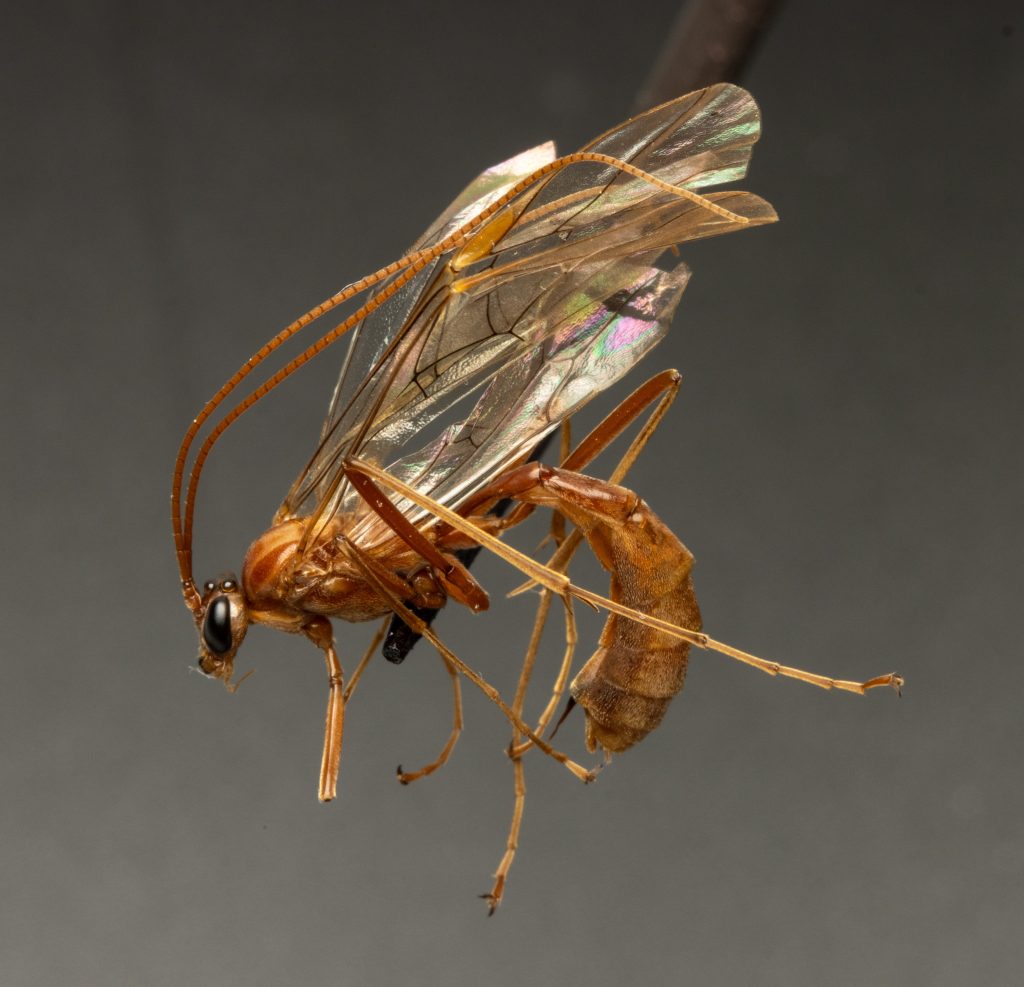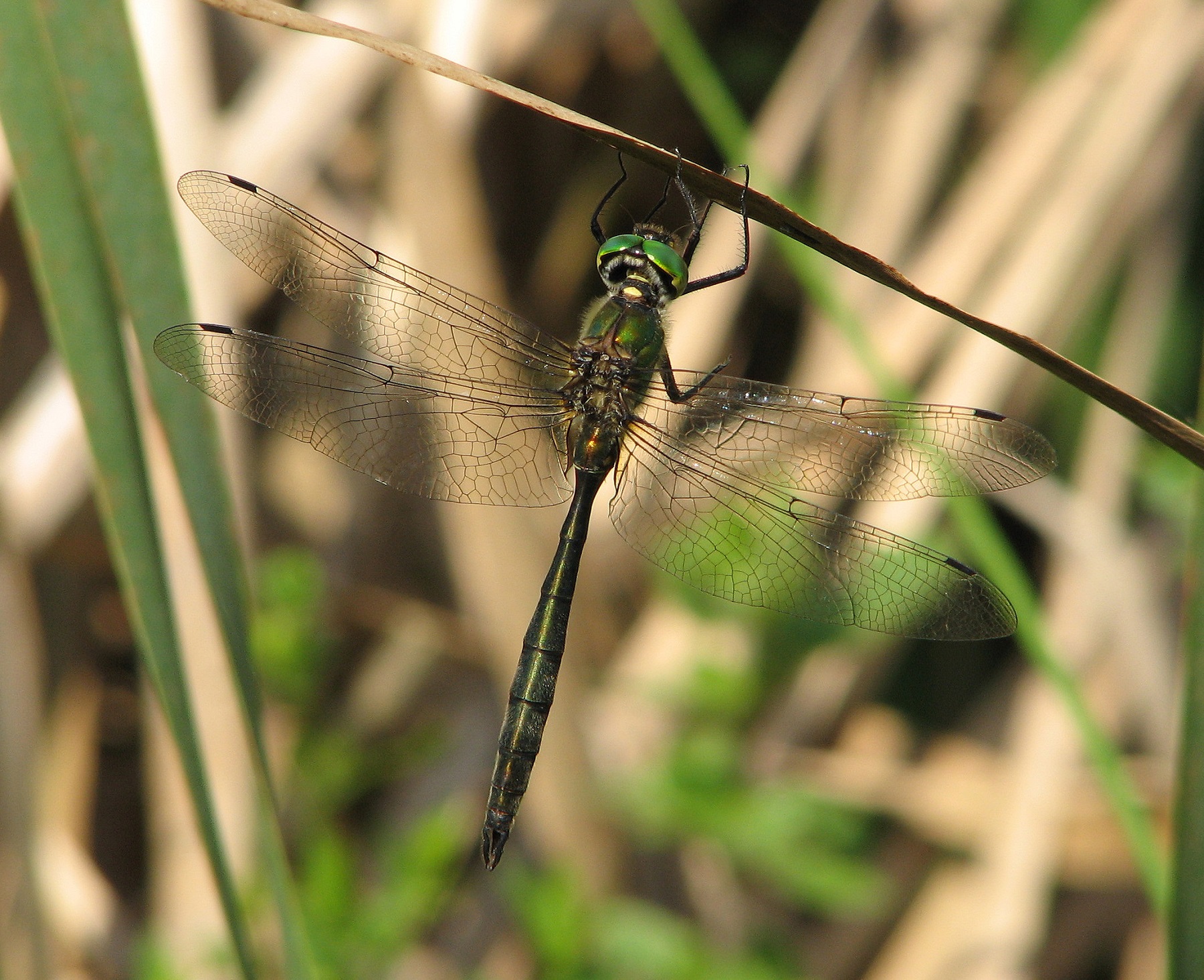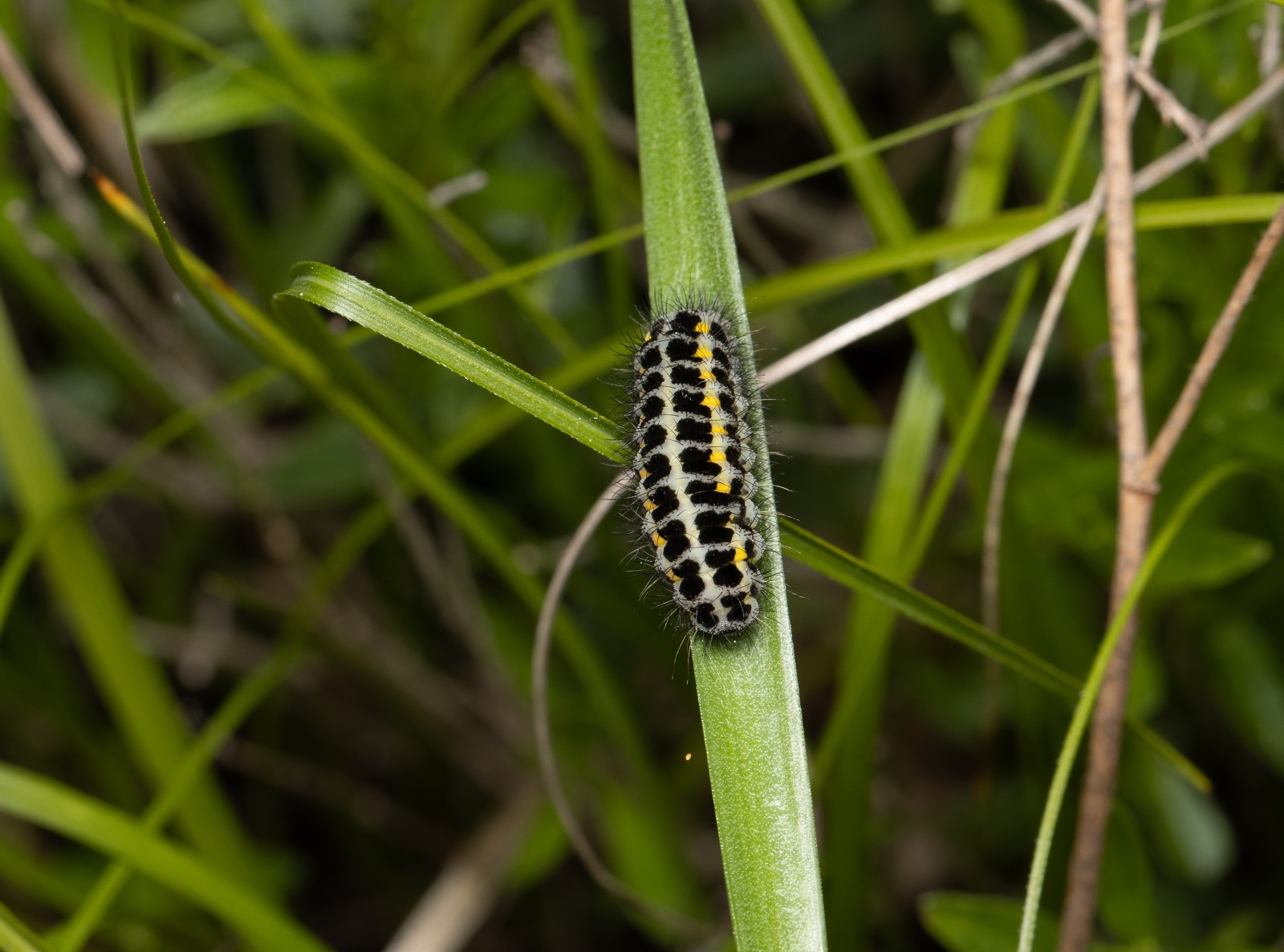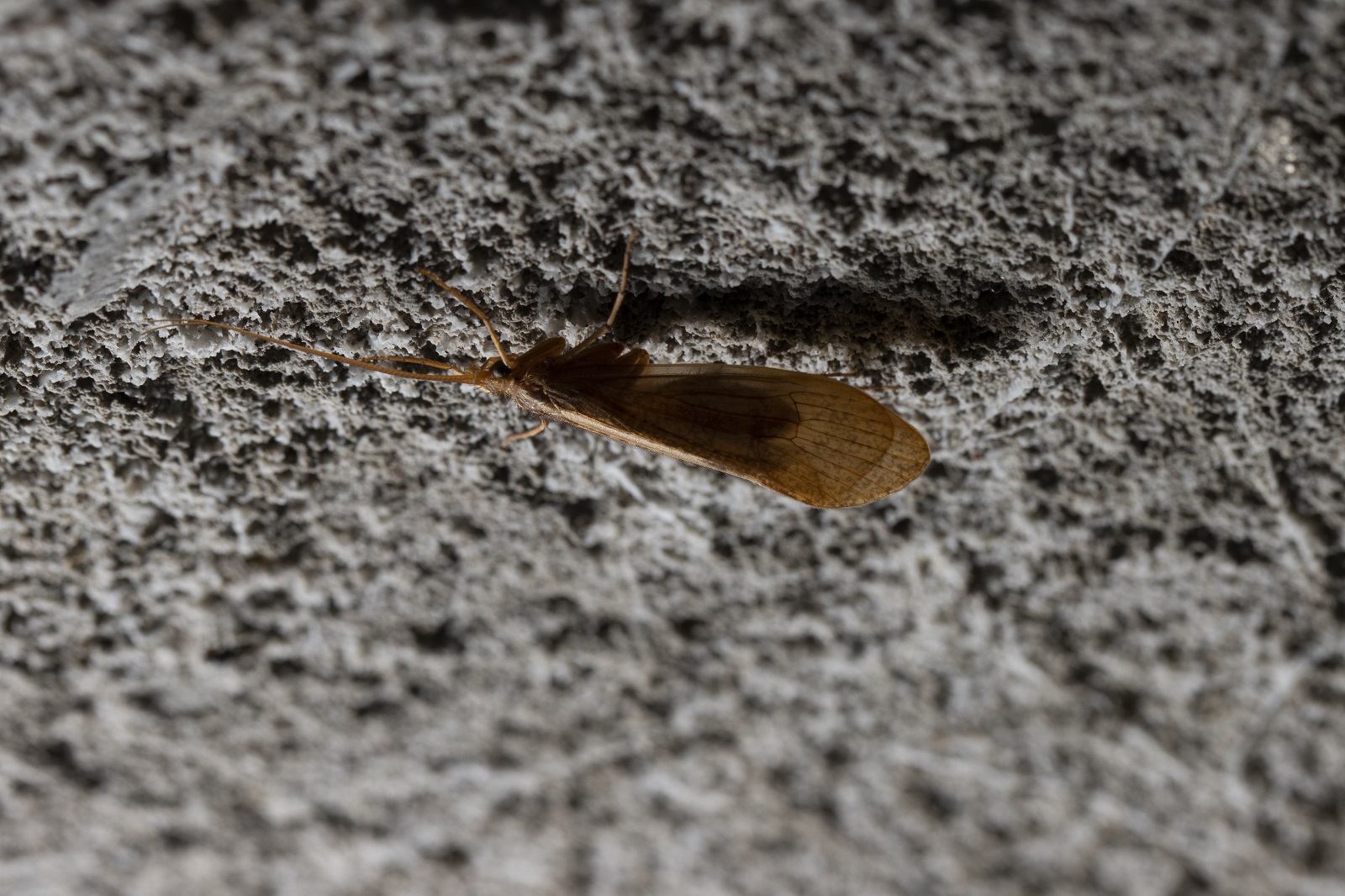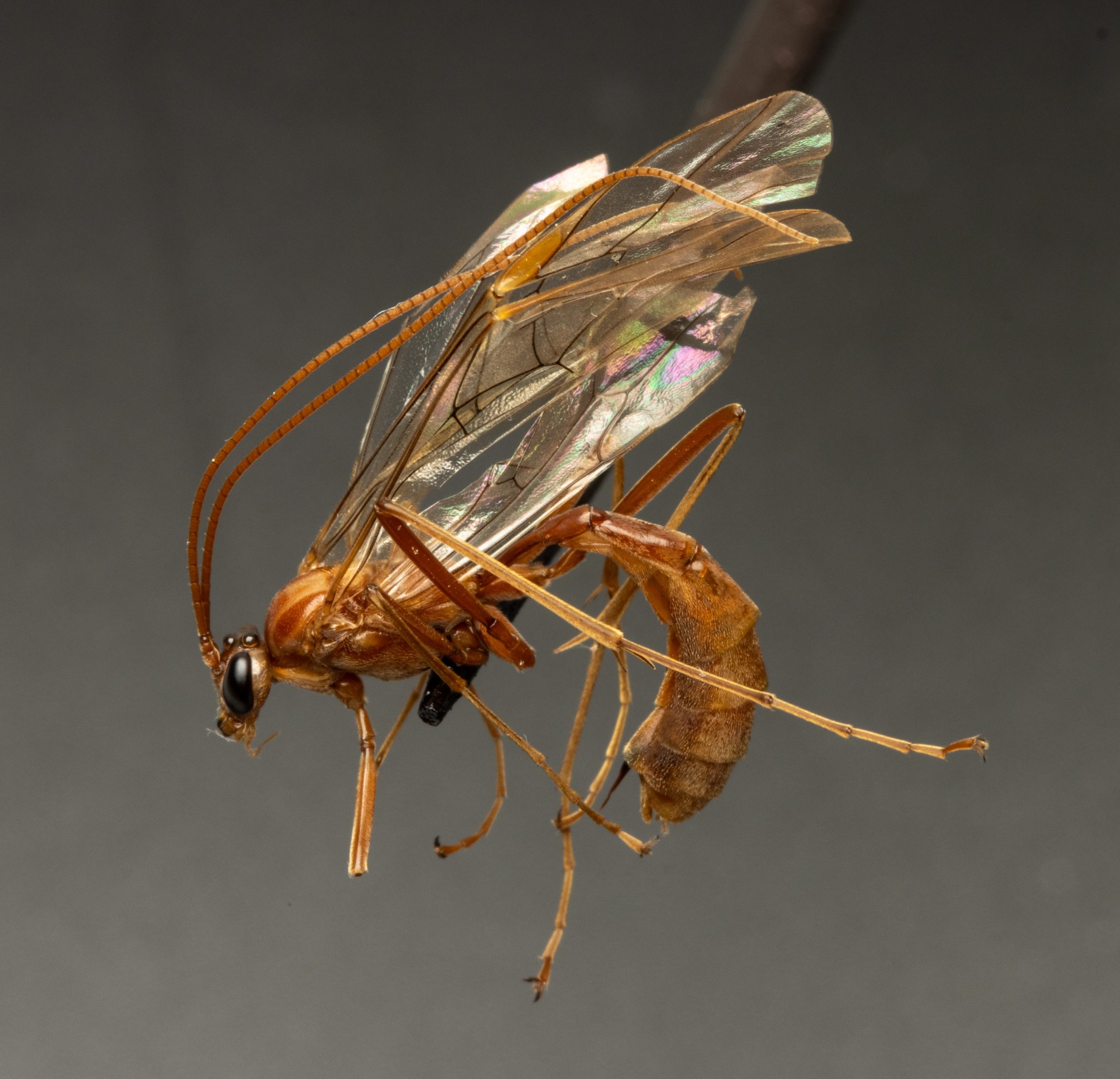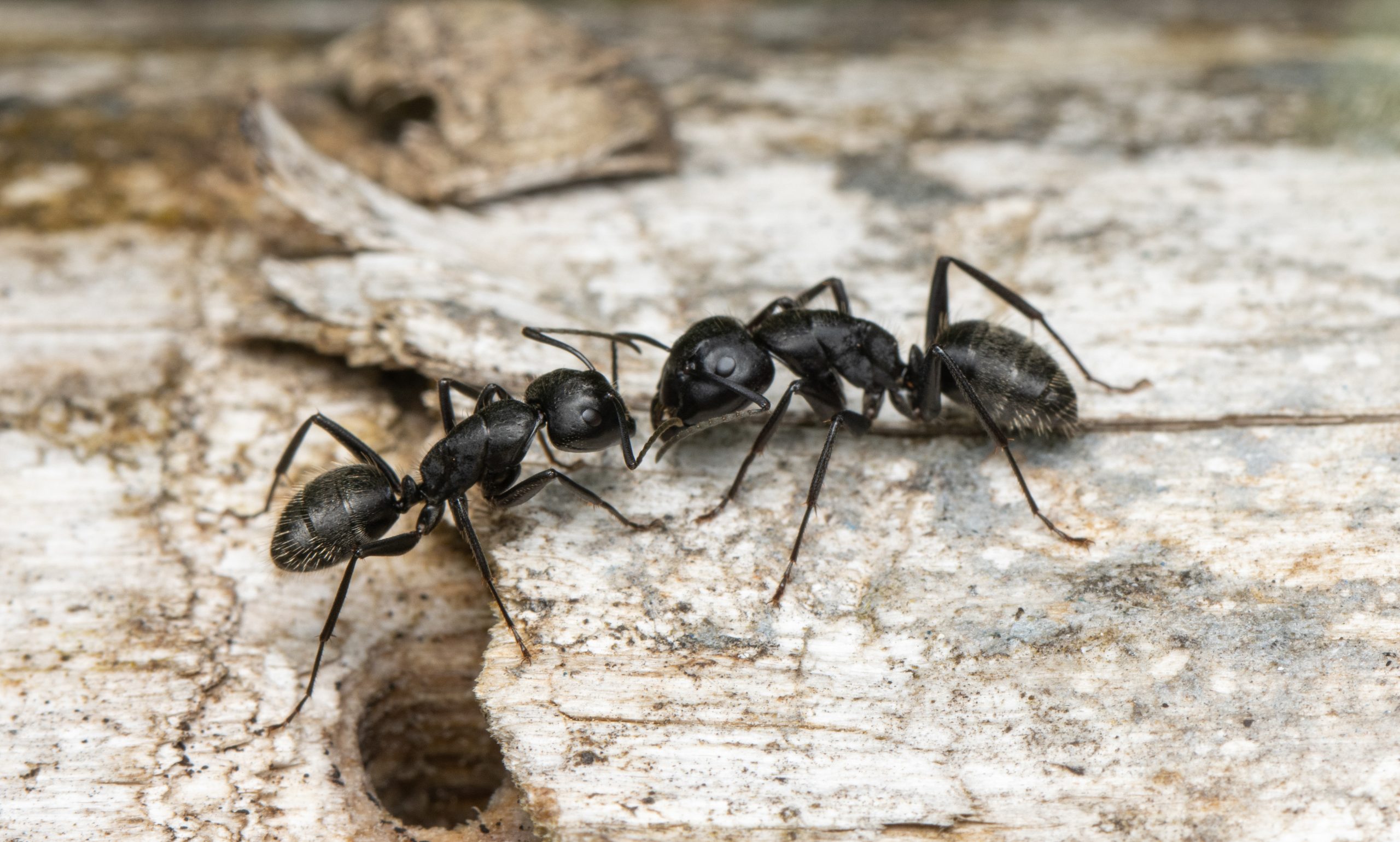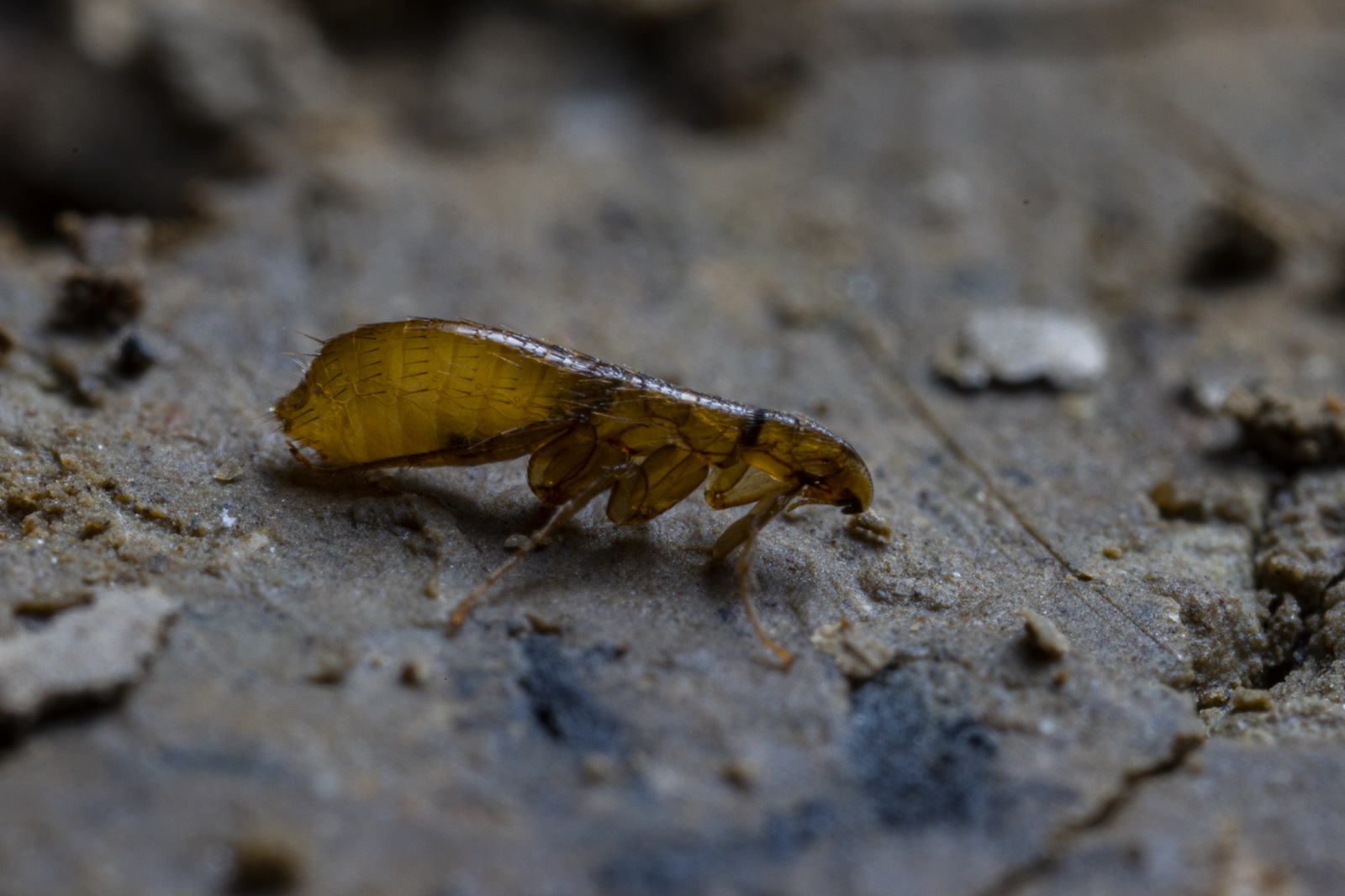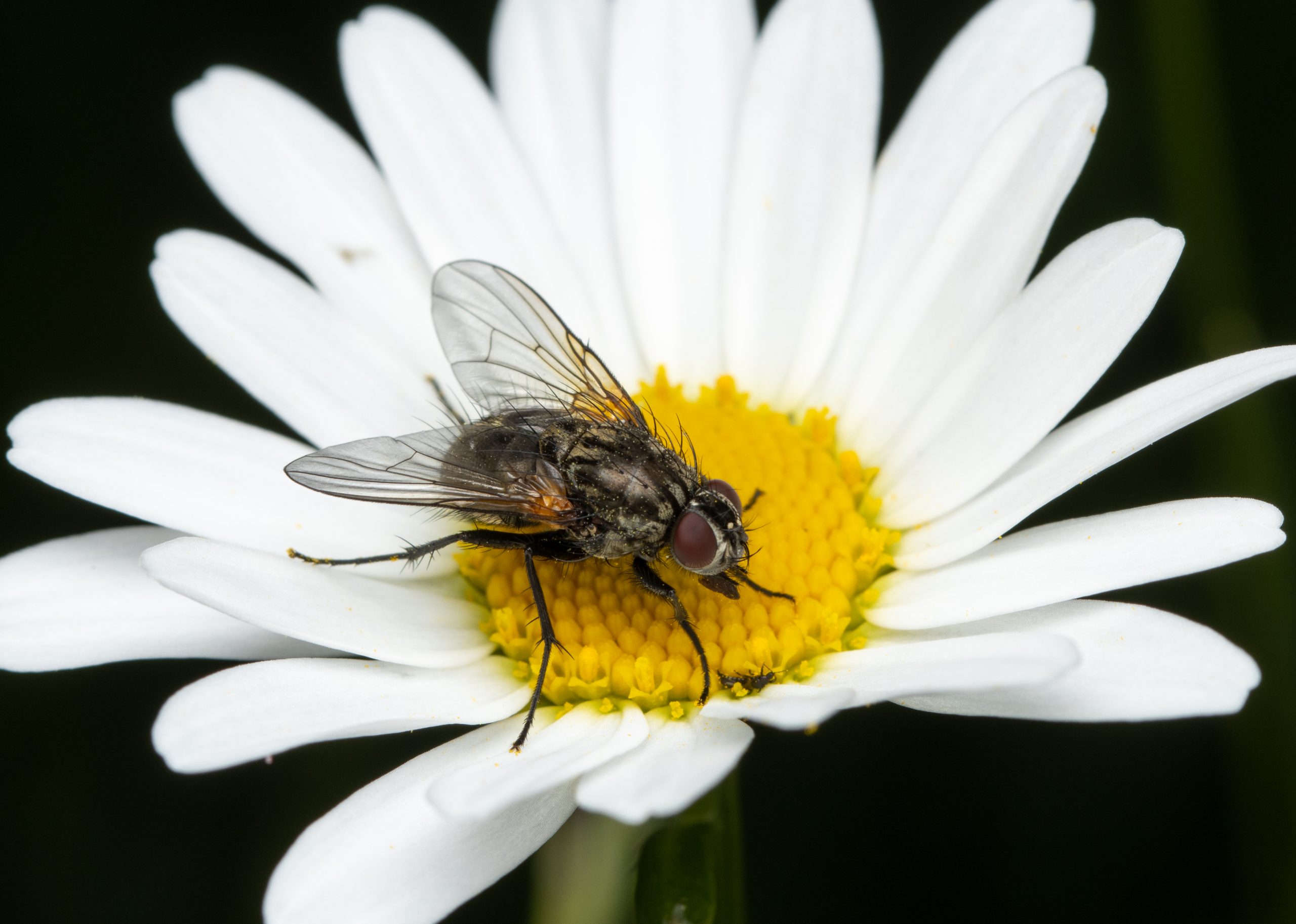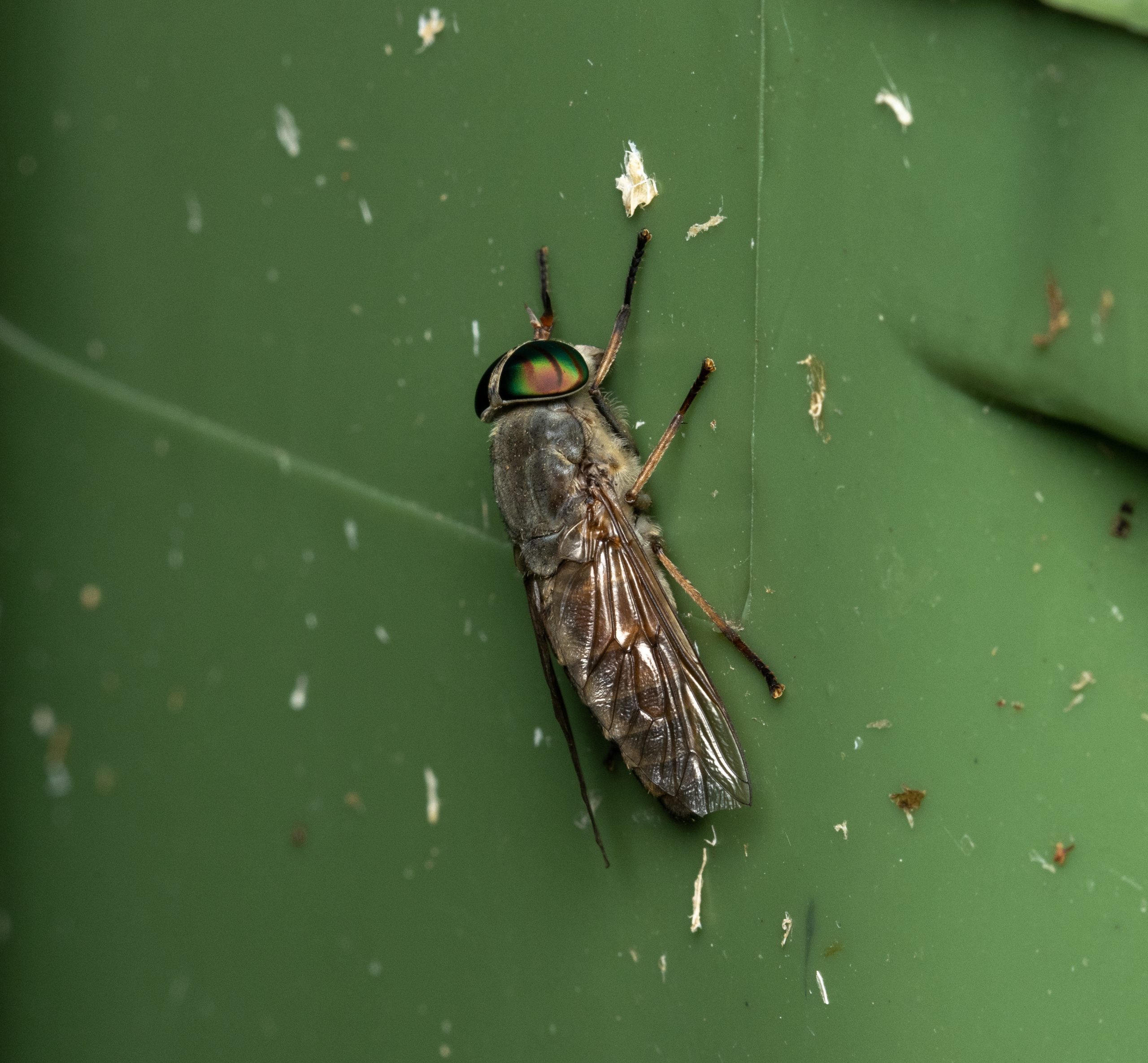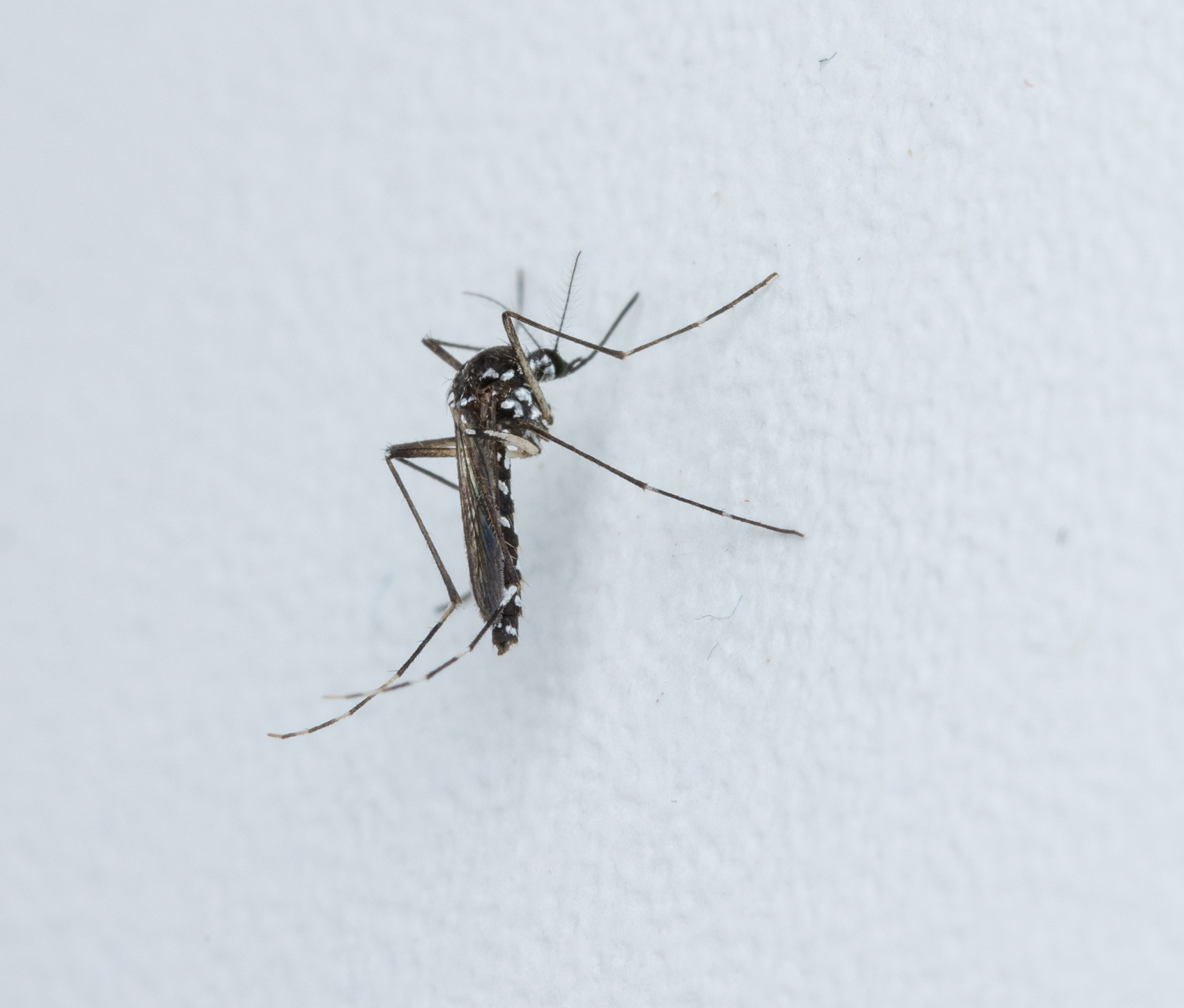- Insects
Ichneumonidae
The body plan of ichneumon wasps is generally similar to that of other narrow-waisted wasps. Their body is divided into three parts: the head (cephalon), thorax, and abdomen. The initial segments of the abdomen are strongly constricted into a narrow petiole, sharply separating the thorax from the abdomen.
The head features a pair of compound eyes, three simple ocelli, filamentous antennae, and mandibulate mouthparts for chewing.
The thorax consists of three segments, each bearing a pair of legs. The middle and rear thoracic segments each bear a pair of membranous, sparsely veined wings. The forewings are larger than the hindwings, and during flight the two pairs are coupled by small hooks (retinaculum).
The abdomen lacks legs. The abdomen of females terminates with the ovipositor, which is elongated, tubular and designed for egg-laying. Along with the eggs, the ovipositor can also inject venom to immobilise the host. In some ichneumon species, the ovipositor can measure several centimetres, exceeding the length of the body.
Ichneumon wasps comprise the largest family of Hymenoptera, with approximately 25,000 described species. They are found on all continents except Antarctica, inhabiting virtually all terrestrial ecosystems.
All ichneumon wasps are parasitoids, meaning their larvae develop inside a host, ultimately killing it at the end of their development. The larvae’s hosts are most often the larvae of other holometabolous insects. Predominant hosts include the larvae of lepidopterans, beetles, dipterans, and other hymenopterans. Some ichneumon wasps also parasitise spiders.
In most cases, the female lays her eggs directly inside the host’s body by piercing its integument with her ovipositor. Often, she must also penetrate the substrate in which the host resides. For instance, in the case of beetle larvae living within tree trunks, the ichneumon wasp must pierce several centimetres of wood, in addition to the larva’s integument. One such example is the ichneumon wasp Dolichomitus mesocentrus, which parasitises the larvae of longhorn beetles (Cerambycidae).
Adult ichneumon wasps are free-living and feed on various food sources. They most commonly consume plant sap and nectar. Females of some ichneumon species also feed on host body fluids that escape through the host’s integument during egg-laying. Parasitism by ichneumon wasps plays a significant role in regulating the population sizes of certain arthropods that serve as their hosts. As a result, some ichneumon species are employed in biological control of certain insect pests.
More photos
Related arthropods
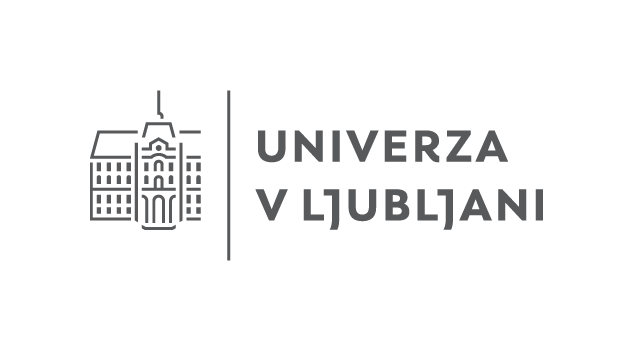
Authors
- Urban Bogataj,
- Gregor Bračko,
- Teo Delič,
- Cene Fišer,
- Žiga Fišer,
- Rok Kostanjšek,
- Rudi Verovnik,
- Miloš Vittori,
- Valerija Zakšek.
Students Vito Ham, Vesna Jurjevič, Gaj Kušar, and Adrijan Samuel Stell Pičman also participated in the project.
